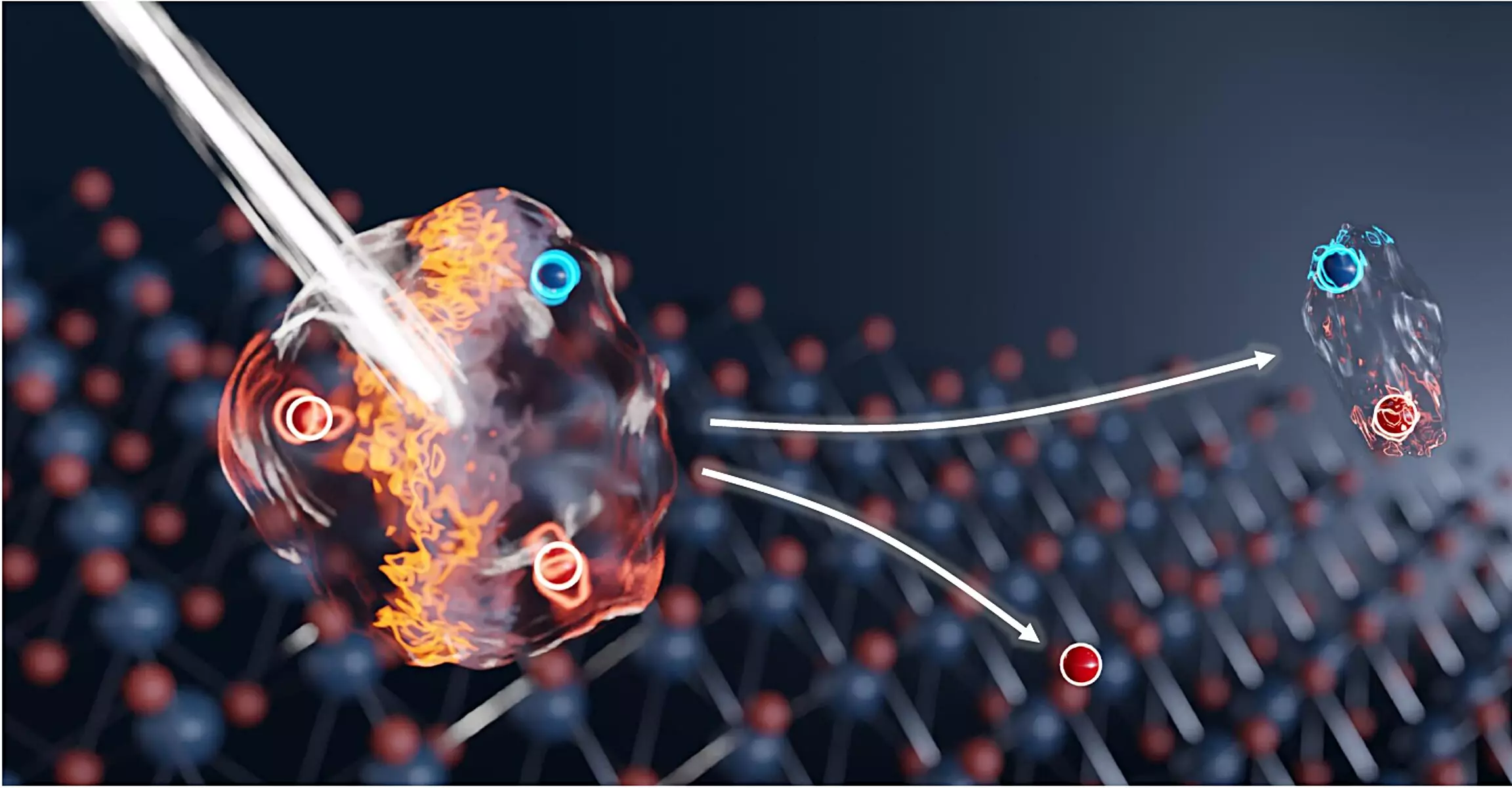The recent advancements in two-dimensional (2D) materials have ushered in a wave of excitement across the realms of electronics and quantum computing. These ultra-thin substances—involving only a few atomic layers—exhibit unique properties that differ fundamentally from traditional bulk materials. The work completed by an international team spearheaded by researchers from TU Dresden highlights the significant potential of these 2D semiconductors. Conducted at the Helmholtz-Zentrum Dresden-Rossendorf (HZDR), this study has unveiled the capability to rapidly switch between two crucial states in ultra-thin layers, enhancing our understanding of excitons and trions—elements vital to future applications in optical data processing and flexible detection technologies.
Understanding Excitons and Trions
Excitons, which are electron-hole pairs formed when an excitation event occurs, are at the core of many of the beneficial properties of 2D materials. When an electron absorbs energy, it gets elevated from its original position, leaving behind a positively charged hole. This interaction between the negatively charged electron and the positively charged hole results in the formation of an exciton—a bound state that is crucial for various optical applications.
Moreover, when another free electron approaches, it can interact with the exciton to create a trion. Trions possess both electric charge and a strong light emission capability, making them highly desirable for applications requiring simultaneous optical and electronic manipulation. Until recently, the switching processes between these states were recognized but limited by relatively slow speeds, hindering the practical exploitation of these phenomena in real-world applications.
The study led by Prof. Alexey Chernikov and physicist Dr. Stephan Winnerl marks a significant breakthrough in this domain. The researchers utilized powerful terahertz pulses generated by the FELBE free-electron laser to accomplish the simultaneous rapid transition between excitons and trions in molybdenum diselenide—an atomically thin material. Through their precise experiments, they demonstrated that the switching process can occur in mere picoseconds (trillionths of a second), a remarkable acceleration by a factor of almost one thousand compared to previous methods relying solely on electronic techniques.
This improvement opens up exciting possibilities not only for theoretical research but also for practical applications in next-generation electronics and photonic devices. The significance of generating excitons and trions at such unprecedented speeds can lead to the development of flexible, compact components that can handle optically encoded information with remarkable efficiency.
Expanding Research Horizons
One of the most enticing prospects this research brings to the forefront is the potential to explore complex electronic states and various material platforms. The technique and insights garnered in this experiment can pave the way for the realization of unusual quantum states resulting from strong interactions among many particles. Achieving a better understanding and creating new materials at room temperature could enhance the applicability of these findings in everyday technology.
As we look to the future, researchers have exciting opportunities that could stem from this work. Potential applications include the design of modulators that can execute significant switching processes in ultra-thin crystals. Such technology could provide the backbone for devices that are not only high-performing but incredibly compact—enabling us to rethink our approach to data processing and communication systems.
Beyond just modulation, this research could revolutionize the field of terahertz detection and imaging. The possibility of developing sophisticated detectors that operate effectively within the terahertz frequency range presents an unprecedented avenue for innovation. The intuitive relationship between the switching processes in semiconductor structures and the resulting changes in emitted near-infrared light opens new pathways for imaging technologies.
Imagine a terahertz camera boasting a wide spectrum of adjustable frequencies and a multitude of pixels that could drastically improve detection capabilities across various fields. The implications of such devices are vast, from enhanced sensor technology to substantial advancements in imaging and materials science.
The research conducted by the TU Dresden-led team marks an important step forward in the field of quantum materials. By accelerating the switching processes through innovative methods utilizing 2D semiconductor materials, a plethora of new applications become feasible. As we continue to explore these groundbreaking findings, we inch closer to unlocking the full potential of quantum technologies and reshape our technological landscape for the better. The future of electronics lies in our ability to control and manipulate materials at the atomic level, and this experiment brings us one step closer to that reality.


Leave a Reply